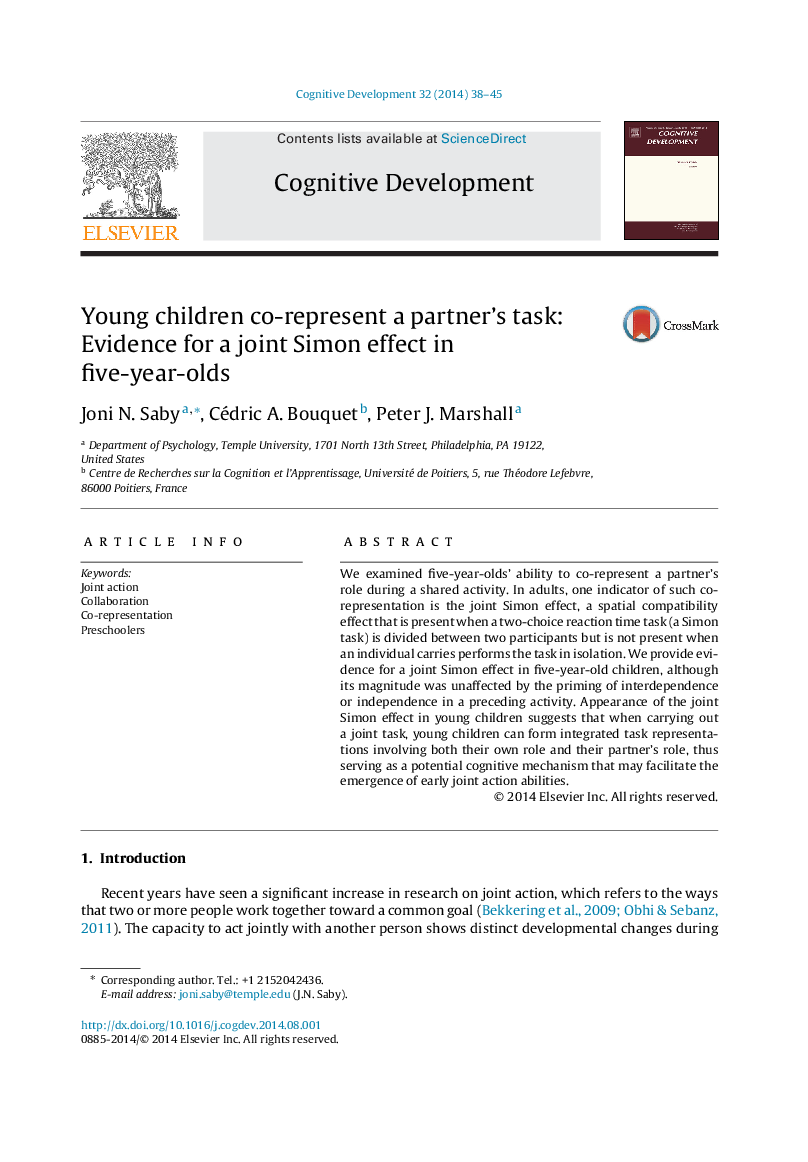| Article ID | Journal | Published Year | Pages | File Type |
|---|---|---|---|---|
| 7272480 | Cognitive Development | 2014 | 8 Pages |
Abstract
We examined five-year-olds' ability to co-represent a partner's role during a shared activity. In adults, one indicator of such co-representation is the joint Simon effect, a spatial compatibility effect that is present when a two-choice reaction time task (a Simon task) is divided between two participants but is not present when an individual carries performs the task in isolation. We provide evidence for a joint Simon effect in five-year-old children, although its magnitude was unaffected by the priming of interdependence or independence in a preceding activity. Appearance of the joint Simon effect in young children suggests that when carrying out a joint task, young children can form integrated task representations involving both their own role and their partner's role, thus serving as a potential cognitive mechanism that may facilitate the emergence of early joint action abilities.
Related Topics
Social Sciences and Humanities
Psychology
Developmental and Educational Psychology
Authors
Joni N. Saby, Cédric A. Bouquet, Peter J. Marshall,
